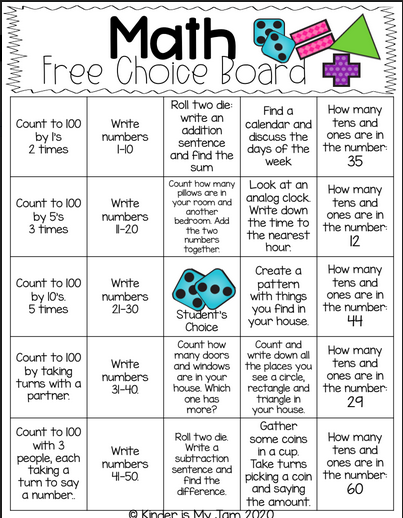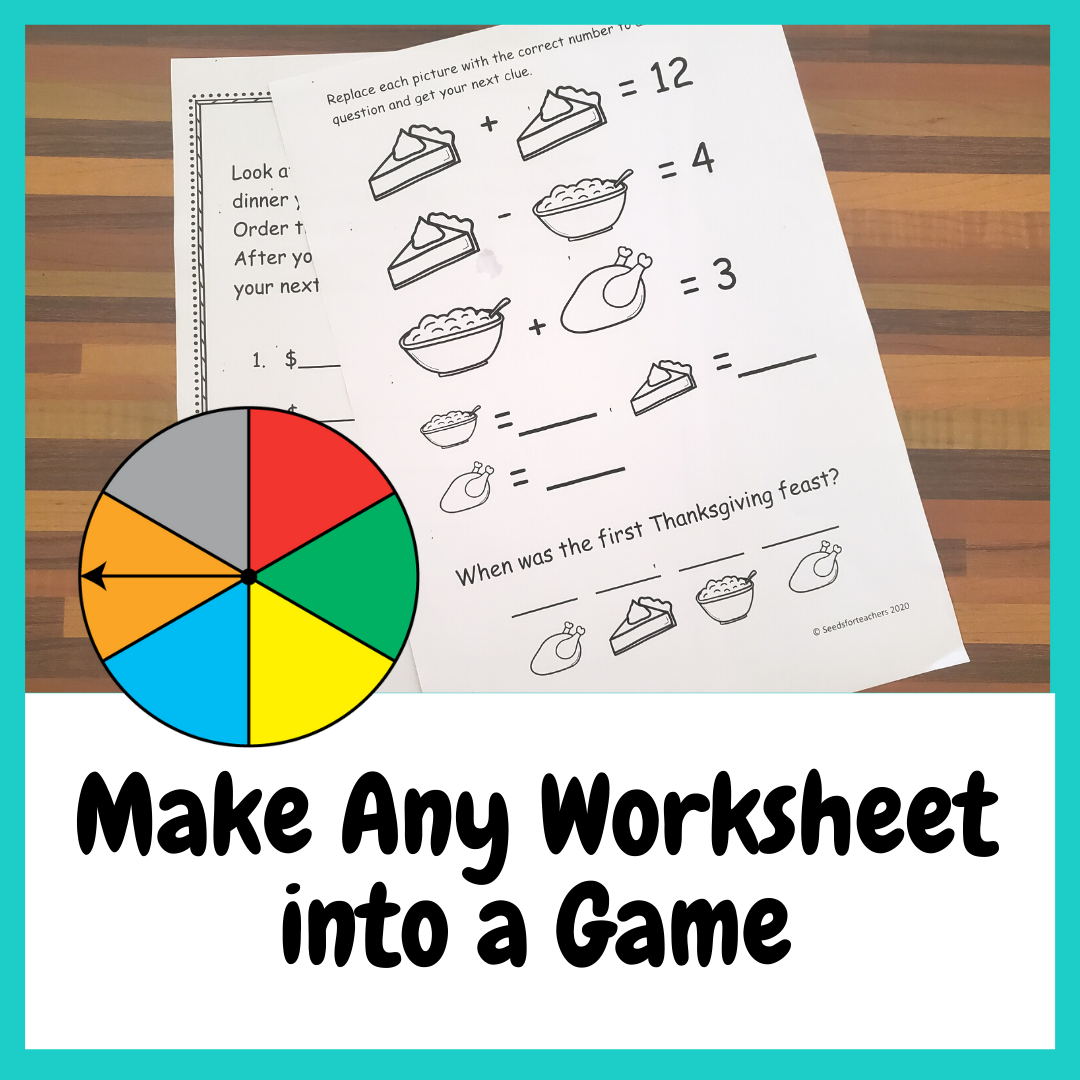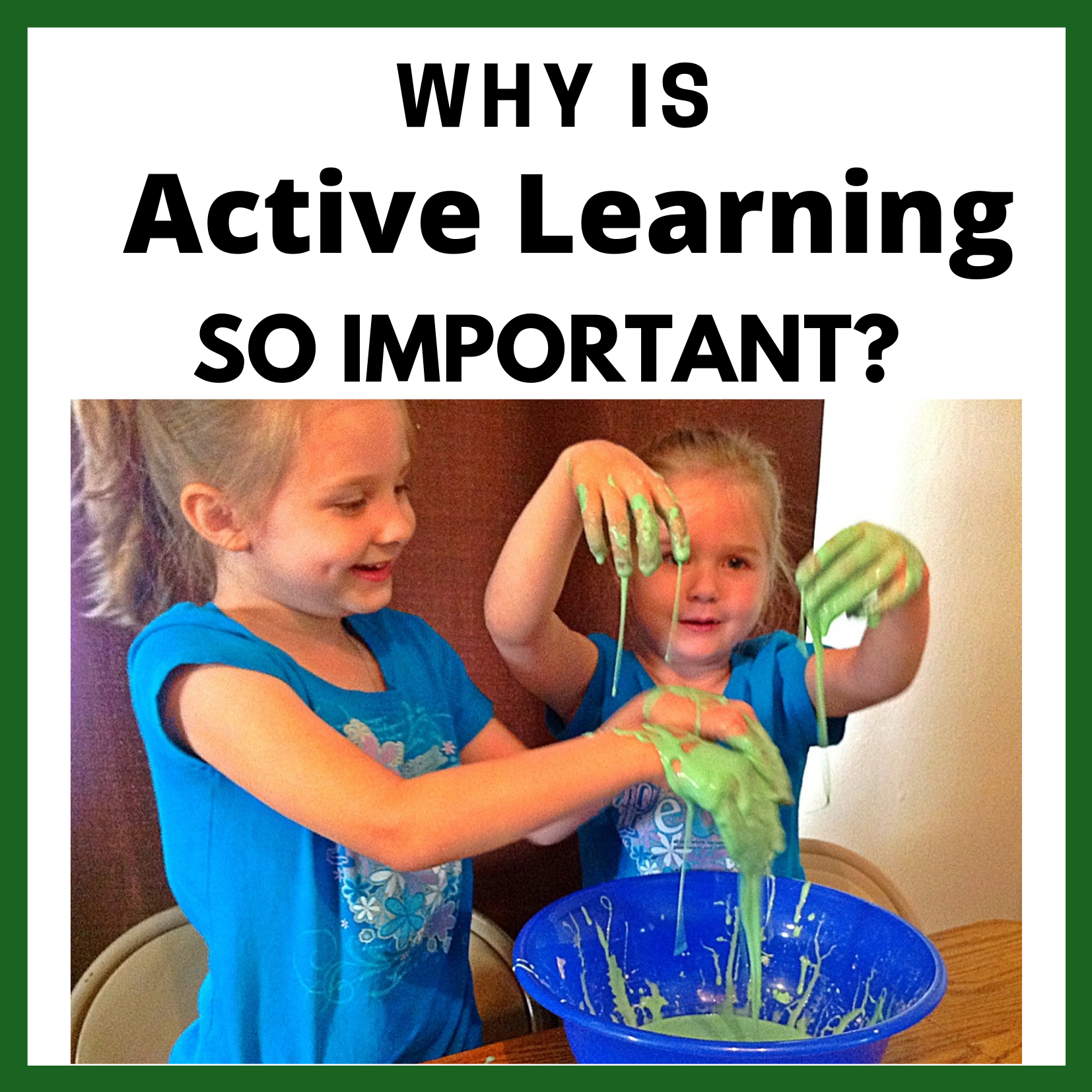Choice boards are a piece of paper with squares on it, each with a different activity for students to complete. Students can choose any of the activities they want to do. Sometimes teachers guide the students by telling them to complete one activity from each row or to try to get 3 in a row like in the game BINGO.
Choice boards provide learners with the power to choose how they learn and how they demonstrate mastery of a particular subject or concept. This freedom encourages them to be more responsible, accountable and independent in their learning. It also allows teachers to easily differentiate since learners work on the activities at their own pace.
The Benefits of Choice Boards:
– Choice is a powerful motivator that improves learning and behavior.
– Teachers get a more accurate picture of all learners’ understanding since learners are able to choose activities that allow them to best demonstrate their learning.
– Learners have more control over the pace at which they navigate the tasks.
– Teachers are freed from orchestrating a lesson and able to meet with learners about their progress, provide feedback on work in progress, or conduct side-by-side assessments.
Types of Choice Boards:
Standards-aligned boards. The entire board (or each row) focused on the same standard but allows learners to demonstrate it in different ways. For example: the whole board might be about dividing two digits by one digit. One activity allows learners to create their own word problems, other activities have them draw pictures to represent the problem, another activity is a math game website.
Thematic boards. All activities on the board relate to the same theme/topic such as “Sharing the Planet” or Reading comprehension.
The choice board below is from Simply Creative Teaching and is focused on responding to what you’ve read. It can be used with any book. Get it for free along with some great graphic organizers.

Review and practice boards. The board reviews different skills taught previously in the year and provides further practice. You might do a review board for basic math skills or writing.
This one if free at Kinder is My Jam on TPT. It’s a great review of a variety of math concepts and skills. Review boards work well for fast finishers or as morning work throughout the year.

Tips for Creating Choice Boards
1. Each choice board should be unified around a subject, concept or learning standard.
2. Vary the type of activities on the board to include all learning styles. Some might use technology, some might be drawing, other might be presenting something orally.
3. The majority of the activities should be able to be completed individually. (Remember all learners will be working on different activities at the same time so you as a teacher won’t be able to help everyone at once).
4. If you want learners to complete multiple activities on the choice board, tell them to complete three activities in a row like in the game BINGO.
5. You can use choice boards as home learning, activities for fast finishers, morning work, or even as a center.
More posts you might like:



